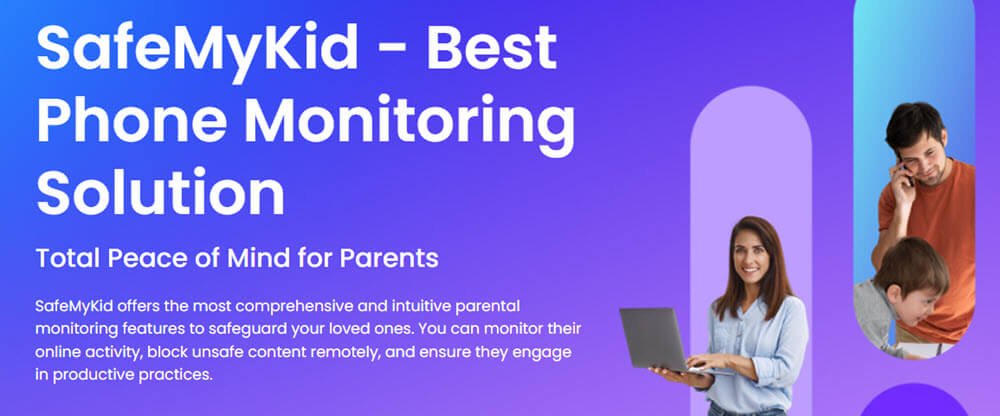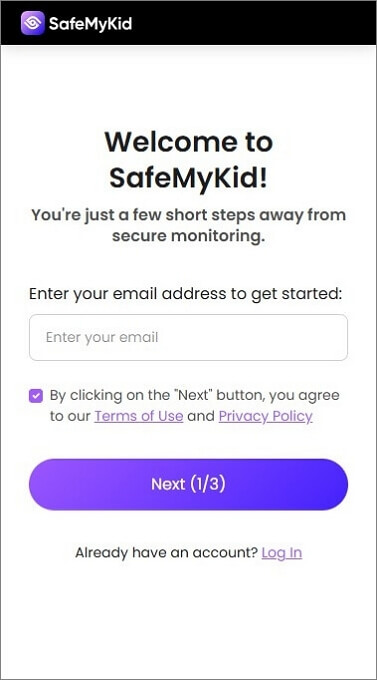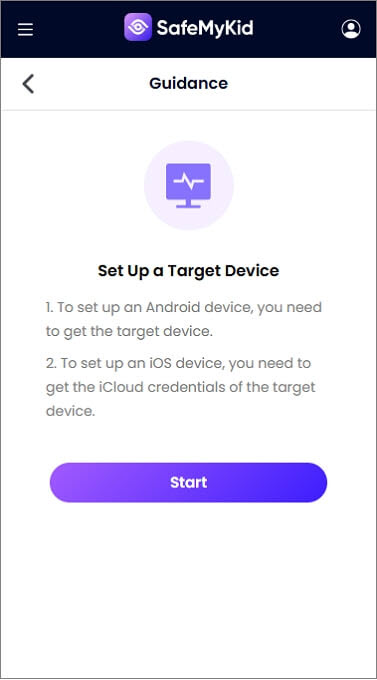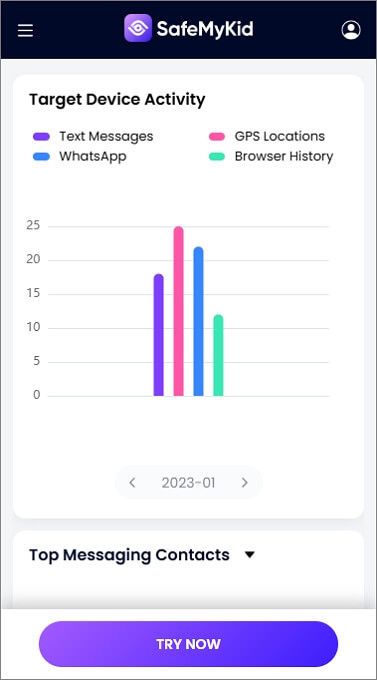What App is Used to Track a Phone: 6 Best Solutions for Mobile Monitoring

Understanding what app is used to track a phone has become increasingly important for parents monitoring children, businesses tracking company devices, and individuals with legitimate location-tracking needs.
![]()
With numerous tracking applications available, identifying the most reliable and feature-rich solutions with privacy features and legitimate use cases. Different situations call for different tracking capabilities, making it essential to understand the available options.
Understanding Phone Tracking Application Requirements
Before examining specific solutions for what app is used to track a phone, it's important to understand the core features and capabilities that make tracking applications effective.
Quality phone tracking apps typically offer several essential functions that determine their effectiveness and reliability:
- Accurate real-time GPS location tracking capabilities
- Historical location data with timeline visualization
- Geofencing features with customizable boundaries
- Stealth operation with minimal device impact
- Secure remote access to tracking information
These fundamental capabilities create the foundation for effective phone tracking, though specific applications may offer additional features tailored to particular use cases ranging from family safety to business device management.
What Makes an App Effective to Track A Phone
When determining what app is used to track a phone successfully, understanding the technical and practical requirements helps identify truly effective solutions.
Quality phone tracking applications combine reliable location technology with user-friendly interfaces and appropriate privacy safeguards.
The best tracking apps maintain consistent performance even under challenging conditions like indoor locations or areas with limited connectivity while providing intuitive access to tracking data through secure online dashboards or companion applications.
What App is Used to Track a Phone?
Tracking a phone typically involves using built-in features or special tools designed to locate a device. Most smartphones today come with location services that can be turned on to help find the device if it's lost or stolen.
These features allow users to view the phone's real-time location, ring it, lock it remotely, or even erase data if needed.
In some cases, people may want to track a phone for safety reasons——like monitoring a child's whereabouts or keeping tabs on an elderly family member. It's important to understand that tracking someone's phone without their knowledge or permission can be illegal and unethical.
Always use tracking tools responsibly and with consent. Whether for personal safety or device recovery, location tracking can offer peace of mind——but only when used the right way.
SafeMyKid - The Best App to Track a Phone

When researching what app is used to track a phone effectively, SafeMyKid consistently emerges as the premier solution due to its advanced tracking capabilities and comprehensive feature set.
This powerful application provides complete visibility into phone locations and activities through sophisticated monitoring technology.
SafeMyKid goes beyond basic location tracking to offer a complete mobile monitoring solution with features spanning location tracking, communication monitoring, and digital activity surveillance.
Its secure dashboard provides intuitive access to all tracking data from any internet-connected device, making it the preferred choice for those with serious monitoring needs.
Key Features of SafeMyKid to Track a Phone
When evaluating what app is used to track a phone comprehensively, SafeMyKid offers advanced capabilities that set it apart from more basic tracking solutions:
- Real-Time GPS Tracking- Monitor exact phone location with continuous updates and minimal delay for true real-time awareness.
- Detailed Location History - Access complete movement timelines with timestamp information and route visualization for historical analysis.
- Advanced Geofencing- Create custom virtual boundaries with instant alerts when the phone enters or leaves designated areas.
- Stealth Operation- Track phone location without visible app icons or notifications that might alert the user to monitoring.
- Multi-Device Compatibility - Works across both Android and iOS devices with platform-optimized tracking techniques.
- Battery Optimization - Sophisticated power management ensures reliable tracking without significant battery drain or performance impact.
- Alert System- Provides emergency notification capabilities for safety situations requiring immediate attention.
- Remote Dashboard Access- View all tracking data securely from any internet-connected device through an intuitive control panel.
- Regular Location Updates- Configurable update frequency balances tracking detail with battery efficiency for optimal monitoring.
How to Set up SafeMyKid to Track a Phone
Setting up SafeMyKid for phone tracking requires just a few straightforward steps to begin monitoring location and activities.
Step 1.Create Your SafeMyKid Account
Visit the SafeMyKid website to register and create your monitoring account.

Step 2.Set up The SafeMyKid App
For Android: Install the SafeMyKid app directly on the target device (requires brief physical access). For iOS: Use iCloud credentials to enable monitoring without physical access to the device.

Step 3.Begin Tracking The Phone's Location
Access your secure dashboard to view real-time location, and movement history, and receive geofence alerts.

5 Other Apps Used to Track a Phone
While SafeMyKid offers the most comprehensive solution, several other applications provide effective phone tracking capabilities. Here's an overview of five additional popular tracking solutions.
1. Life360
![]()
Life360 has established itself as a leading family location tracking platform with a focus on coordinating group location awareness rather than covert monitoring. This popular tracking solution creates "circles" of connected users who can view each other's real-time locations and movements.
The application emphasizes family safety with features like crash detection, driver analysis, and SOS alerts alongside its core location tracking capabilities.
Life360's approach centers on mutual awareness rather than one-sided monitoring, making it particularly suitable for families seeking coordination rather than surveillance.
Pros:
- Purpose-built interface specifically designed for family coordination
- Driver safety features including crash detection
- Battery-efficient location technology with limited drain
- Place alerts for arrival and departure notifications
Cons:
- Limited stealth options as tracking is visible to all users
- A basic free plan with premium features requiring a subscription
- Primarily focused on location without comprehensive monitoring
2. Google Find My Device
![]()
Google's official Find My Device service provides Android users with a native tracking solution for locating lost or stolen phones. This free service offers basic location tracking, remote locking, and device security features through Google's account infrastructure.
While primarily designed for recovering lost devices rather than ongoing monitoring, Find My Device provides reliable location awareness for Android phones.
The service works through Google's location infrastructure, offering system-level integration without additional app installation on newer Android devices.
Pros:
- Free official Google service without subscription costs
- Pre-installed on most modern Android devices
- Reliable Google Maps integration for accurate positioning
- Remote security features like locking and data wiping
Cons:
- Limited monitoring features beyond basic location
- Primarily designed for lost device recovery, not tracking
- Requires the device to be powered on and connected
3. FlexiSPY
![]()
FlexiSPY offers some of the most advanced tracking capabilities available, including unique features like call interception and ambient recording alongside location monitoring.
This premium tracking solution provides comprehensive surveillance options for situations requiring the highest level of monitoring detail.
The application's extensive capability set extends well beyond basic location tracking to include communications monitoring, remote camera activation, and keylogging features.
This comprehensive approach makes it particularly suitable for situations requiring detailed surveillance, though at a premium price point.
Pros:
- The most comprehensive feature set among tracking applications
- Call recording and ambient listening capabilities
- Remote camera and screenshot functionality
- Advanced stealth operations with minimal detection risk
Cons:
- Highest pricing among tracking solutions
- Complex setup requiring technical knowledge
- Legal restrictions on certain features in many jurisdictions
4. Glympse
![]()
Glympse offers a unique approach to location sharing with its temporary, permission-based tracking system. This location-focused application allows users to share their real-time location for specific time periods through shareable links rather than permanent tracking connections.
Unlike most tracking apps, Glympse emphasizes temporary visibility and explicit sharing rather than ongoing monitoring. This approach makes it particularly suitable for short-term location sharing during travel, meetings, or specific events without establishing permanent tracking relationships.
Pros:
- No account creation is required for basic functionality
- Temporary tracking with automatic expiration
- Simple interface focused on quick location sharing
- Privacy-focused with user control over tracking duration
Cons:
- Limited to temporary tracking without permanent monitoring
- Basic features focused primarily on location-sharing
- No stealth capabilities as tracking is explicitly visible
5. Spyic
![]()
Spyic provides a balanced tracking solution with a user-friendly approach to phone monitoring. This versatile tracking application offers location tracking along with communication monitoring and digital activity surveillance through an intuitive dashboard interface.
The platform emphasizes ease of use with a straightforward setup process and web-based control panel that requires minimal technical knowledge. Spyic's approach balances comprehensive monitoring capabilities with accessibility for users without extensive technical expertise.
Pros:
- User-friendly interface designed for non-technical users
- Web-based dashboard accessible from any device
- No jailbreaking/rooting is required for basic features
- Comprehensive monitoring beyond just location
Cons:
- Some features limited on iOS compared to Android
- Subscription-based pricing for all features
- Occasional sync delays during peak usage periods
Key Factors to Consider When Choosing What App is Used to Track a Phone
When evaluating what app is used to track a phone most effectively, it's essential to go beyond surface-level comparisons. A truly effective tracking solution balances functionality, ease of use, and ethical responsibility while addressing your specific monitoring goals.
- Accuracy of Location Tracking
- Stealth Capabilities
- Feature Set Beyond Location
- Remote Access & Control
- Device Compatibility
- Installation Requirements
The core purpose of any tracking app is to provide precise, real-time location updates. Look for apps that use a combination of GPS, Wi-Fi, and cellular data to deliver reliable location accuracy——even in low-signal areas.
For discreet tracking, especially in situations requiring confidentiality, choose an app that operates invisible to the device user. This means no app icon, no notifications, and no trace in settings or battery usage.
Many modern tracking apps offer more than just location data. Consider whether you also need features like call logs, message tracking, app usage, geofencing, or browser history monitoring. These additional tools provide deeper insight, particularly for parental control or employee oversight.
The best tracking apps allow you to access data remotely via a web-based dashboard or mobile app. This convenience ensures you can monitor from anywhere without physically accessing the tracked phone after setup.
Always check if the app works smoothly with your target device. Some tracking apps are optimized for Android, while others specialize in iOS tracking through iCloud credentials or other non-invasive methods. Avoid compatibility issues by confirming this in advance.
Apps vary in their technical setup. Some may require jailbreaking or rooting, while others offer a non-invasive setup that preserves the device's warranty and security. Pick the approach that aligns with your comfort level and access to the device.
How to Choose The Right App to Track a Phone
When determining what app is used to track a phone for your specific situation, several important factors should guide your selection:
Monitoring Purpose - Clearly identify whether you need simple location awareness, comprehensive surveillance, or specific feature monitoring to narrow the field of appropriate applications.
Device Compatibility - Ensure the tracking solution works effectively with the target phone's operating system, as capabilities can vary significantly between iOS and Android platforms.
Technical Requirements - Consider whether you need features requiring special configuration like jailbreaking/rooting or whether the standard installation is sufficient for your needs.
Visibility Preferences - Determine whether the tracking should be visible to the phone user (like family coordination apps) or operate invisibly (like monitoring solutions).
Budget Considerations - Evaluate free versus premium options based on your feature requirements, as more comprehensive tracking typically requires subscription payment.
Legal Compliance - Ensure your intended use aligns with legal requirements in your jurisdiction, particularly regarding consent and notification for monitoring.
These considerations help identify the tracking solution that best fits your specific circumstances while ensuring appropriate and effective monitoring.
If you're looking for a reliable, discreet, and feature-rich tracking solution, SafeMyKid stands out. It works seamlessly with both Android and iPhone devices and offers flexible options for both visible and hidden tracking.
Whether you're a parent, partner, or guardian, SafeMyKid combines ease of use, robust functionality, and full compliance with privacy regulations, making it a smart, secure choice for today's monitoring needs.
Legal Considerations When Using Apps to Track a Phone
Before implementing any phone tracking solution, understanding the legal implications is essential to avoid potential consequences:
Consent Requirements - In many jurisdictions, tracking an adult's phone without their knowledge may violate privacy laws, though parental monitoring of minor children typically has broader legal allowances.
Ownership Factors - You generally have more legal latitude to track devices you own and provide to others versus tracking someone else's personal property.
Notification Obligations - Some regions require explicit disclosure even when tracking is legally permitted, such as for company-owned devices or minor children.
Purpose Limitations - The intended use significantly impacts legal status, with protective purposes like child safety viewed differently than surveillance for control.
Jurisdiction Variations - Legal requirements vary significantly between regions, requiring research specific to your location rather than general assumptions.
Always research the specific laws applicable to your location and situation before implementing any phone tracking solution to ensure your monitoring activities remain within legal boundaries.
Frequently Asked Questions about Apps Used to Track Phones
Here are answers to common questions about phone tracking applications:
1. What app is used to track a phone without the person knowing?
Applications like SafeMyKid, mSpy, and FlexiSPY are designed to operate discreetly without alerting the phone user to tracking.
These solutions typically run in the background without visible icons or notifications, making them suitable for scenarios requiring invisible monitoring such as parental supervision of younger children.
2. Can you track a phone without installing an app?
Yes, certain methods allow tracking without direct app installation. For iPhones, iCloud-based tracking through services like SafeMyKid or Find My iPhone can monitor location using Apple ID credentials without physical device access.
For Android, Google's Find My Device offers basic tracking through Google account association.
3. What is the most accurate app for tracking phone location?
Applications that combine multiple location technologies typically provide the most accurate tracking results.
SafeMyKid, Life360, and Find My generally offer superior accuracy by utilizing GPS, cellular triangulation, and Wi-Fi positioning simultaneously to maintain location awareness even when individual systems have limitations.
4. Are free tracking apps reliable?
Free tracking apps like Google Find My Device and Apple's Find My provide reliable basic location tracking but generally offer limited features compared to premium alternatives.
Free options typically lack advanced capabilities like geofencing, historical data, or stealth operation, making them suitable for simple tracking needs but insufficient for comprehensive monitoring.
5. How can I tell if my phone is being tracked by an app?
Signs of tracking may include unusual battery drain, increased data usage, unexpected performance issues, or unfamiliar background processes.
On Android, checking installed apps (including hidden ones) and reviewing permissions can reveal tracking software, while iOS users should check Screen Time settings and location permission history.
Conclusion
When investigating what app is used to track a phone effectively, the answer depends on your specific monitoring needs, technical requirements, and intended use case.
Comprehensive solutions like SafeMyKid offer the most complete tracking capabilities for serious monitoring situations.

